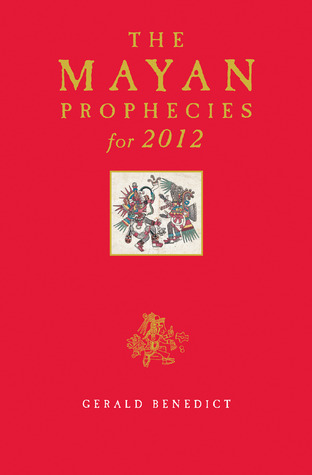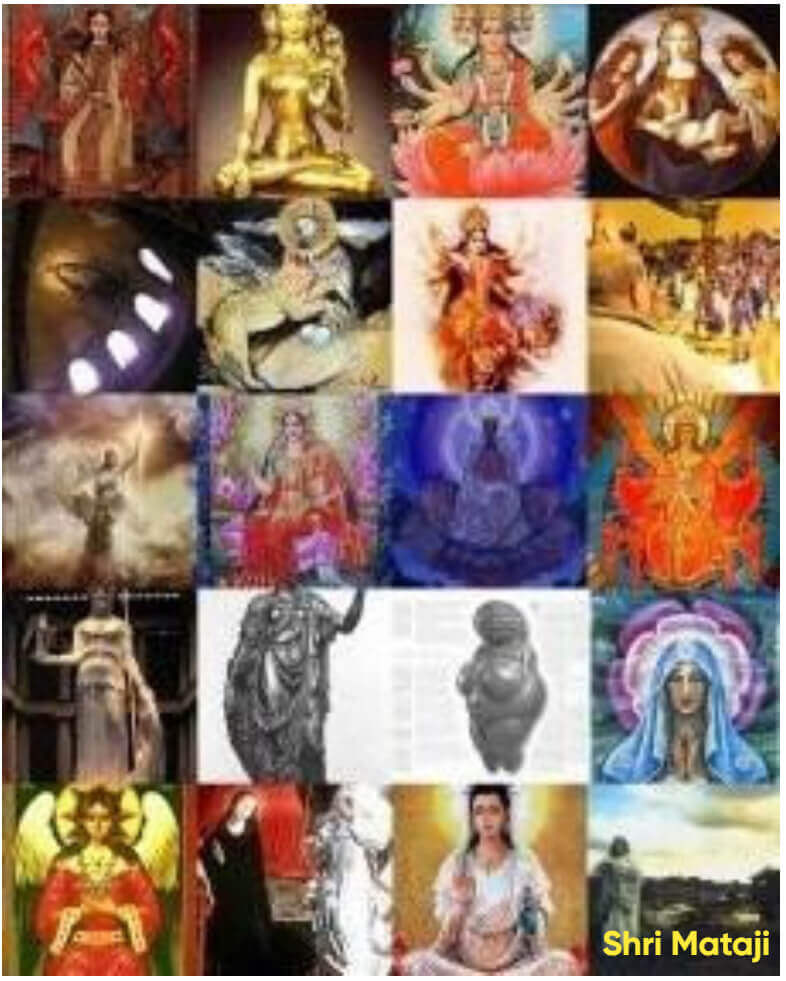Quetzalcoatl : The Prophecy Of The Return Of A Supreme Being
The Mayan Prophecies for 2012

Mayan mythology has, to a great extent, pivoted around Quetzalcoat, the plumed or feathered serpent, one of the principal gods of Mesoamerican religion, whom the Maya called Kukulcan. His cult and its influence were not confined to the Toltec-Maya, and his emblem, the feathered serpent, is found throughout Mexico. Much of Mesoamerican religion, and one of the principal Mayan prophecies, was focused on the belief that Kukulcan would return. This belief was so deeply embedded that in November 1519, Montezuma II, ruler of the Aztecs, virtually surrendered to Cortez, believing him to be either an emissary of Quetzacoatl or the god himself, newly incarnated....
Quetzalcoatl is frequently represented as a feathered or plumed serpent, and because of this serpent symbolism, the prophecies of the return of Quetzalcoatl/Kukulcan have important associations with the esoteric parallel of Hinduism's secret knowledge of kundalini and the seven chakras, the body's centres of energy. Although there is a tradition that before the Christian era, Mayan elders and priests traveled to India taking their knowledge with them, the influence remains conjectural. Even so, it is remarkable that the Maya taught about the seven power centres of the human body by which means the energy of the cosmos was assimilated and expressed. It may well be a striking example of parallel development.
In Hindu teaching, kundalini represents a serpent-like potential curled at the base of the spine. Specific techniques of yoga and meditation can 'awaken' this serpent whose energy rises through the seven chakras. Training in this technique under the necessary guidance of a guru or teacher is one of the many 'paths' to liberation. In Mayan mythology, the source of this energy lies in the Earth from where it begins to move; first, to the base of the spine, then through each of the seven chakras. This vital link between the Earth and the body is one of the central themes of the prophecies that speak of the urgent need of humanity to recover its intimate relationship with Nature.
Thus far, we have a prophecy that speaks of the return of a god which, understood literally or otherwise, will liberate earthbound energies, and revitalize our consciousness and the life of the spirit. Beyond this, the prophecy carries a message of broader significance pointing to a Supreme Being, that is, to the Mayan monotheism of one true god, Hunab K'u.
Most of the major world religions hold on to an expectation of the coming of a Supreme Being, Teacher, or Saviour. Jews focus on the Messianic hope, Christians on the Second Coming of Christ, Islam on the return of Jesus the prophet and the Mahdi. Hinduism holds to traditions such as that of Kalki, Buddhism to a concept of the Maitreya, the 'loving one', the fifth and last of the five earthly Buddhas. Robert Boissiere's account of the belief in an imminent return of a type of teacher or saviour among native and aboriginal people suggests that their beliefs are similar to the Christian expectation of the 'Second Coming' of Jesus. Each of these traditions, preserving as they do the myth of a returning saviour or leader, also have in common the assurance that the return will be linked to a time when both humanity and the Earth are at risk.
The Mayan Prophecies for 2012
Gerald Benedict, Watkins (Sep 2, 2008)
“This Power is placed in the triangular bone which is called as sacrum, which means Greeks knew about this centre. They very well knew about it, that's why they called it sacred, sacrum. In many countries there has been a manifestation that they know about this particular Power.
I happened to go to Colombia where I collected an authentic antique copy of the antique necklace. The necklace had at its bottom a Kundalini and even the earrings had the Kundalini, but, surprisingly, it was from the Indians of America, though it is now kept in the museum in Colombia. It was in America that people knew about Kundalini, definitely absolutely in three and a half coil they had done this pattern very well. Is very surprising that it was done even before Columbus came here.”
The Paraclete Shri MatajiPhiladelphia, USA—Oct 15, 1993
The Paraclete and the Prophecy of the Return of a Supreme Being
Introduction
The prophecy of the return of a Supreme Teacher or Being within Mayan traditions finds resonance in multiple religious traditions across the world. Quetzalcoatl (known as Kukulcan to the Maya) is at the heart of this prophecy, symbolizing a divine guide or transformative force meant to elevate human consciousness. Similarly, Jesus Christ, in the Gospel of John, promises the coming of the Paraclete, a divine Comforter, Teacher, and Advocate who will lead humanity into all truth. This analysis explores how the prophecy of the Mayan Supreme Being aligns with the promise of the Paraclete, providing a broader, interfaith understanding of divine intervention in human evolution.
The Mayan Prophecy of the Supreme Being’s Return
Mayan prophecies, especially those associated with Katun 5 Ahau and Katun 1 Ahau, speak of a return of Kukulcan, a Supreme Being or Teacher who will alleviate human suffering and restore balance. The prophecy does not necessarily indicate a literal return but rather an awakening within people, enabling them to embody the characteristics of this divine presence. This aligns with a spiritual transformation where individuals transcend duality and recognize their unity with the divine.
Mayan mythology often represents Quetzalcoatl/Kukulcan as the feathered serpent, a symbol associated with wisdom, enlightenment, and the dynamic power of spiritual awakening. Some interpretations link this to the concept of kundalini energy in Hinduism, suggesting an esoteric parallel where divine energy rises within the human being, leading to self-realization.
The Paraclete Promised by Jesus
Jesus Christ, in the Gospel of John (14:16-17, 14:26, 16:7-13), speaks of the coming of the Paraclete, also referred to as the Holy Spirit. The Paraclete is described as the Spirit of Truth, a divine teacher who will continue Christ’s work by guiding humanity into higher wisdom, offering comfort, and unveiling deeper spiritual realities. This promise is about the presence of a divine force within and among people, enabling them to transcend their limitations and attain a higher state of consciousness.
Jesus describes the Paraclete as a transformational presence that will lead individuals toward truth, reminding them of all that he taught. This aligns with the Mayan prophecy’s idea that people themselves must undergo a spiritual evolution, taking on the attributes of the Supreme Being.
Parallel Themes Between the Paraclete and the Mayan Supreme Being
- Transformation and Spiritual Awakening: Both the Paraclete and Kukulcan’s return involve the elevation of human consciousness. The Paraclete teaches and transforms, while the Mayan tradition speaks of an awakening where individuals embody divine qualities.
- Divine Comfort and Guidance: Jesus refers to the Paraclete as the Comforter, a source of divine reassurance and wisdom in difficult times. Similarly, the Mayan prophecy speaks of a Deliverer who will alleviate suffering and guide people to unity.
- Universal Truth and Liberation: The Paraclete is called the Spirit of Truth, who reveals what is hidden and leads humanity toward ultimate wisdom. Mayan teachings suggest that Kukulcan’s return will revitalize spiritual consciousness, bringing about a greater understanding of existence.
- Integration with the Natural Order: The Mayan tradition emphasizes humanity’s need to reconnect with the Earth and cosmic energies. The Holy Spirit, as described in Christian theology, represents a divine force that harmonizes human beings with God’s creation, ensuring alignment with divine will.
The Spiritual Energy Awakening Across Traditions
The concept of divine awakening and the movement of sacred energy is present across multiple traditions.
- Hinduism’s Kundalini and the Shakti Energy: In Hindu philosophy, the divine energy of Shakti lies dormant at the base of the spine in the form of Kundalini. When awakened through spiritual practice, this serpent-like energy rises through the seven chakras, leading to enlightenment and union with the divine. This aligns with the Mayan feathered serpent, Kukulcan, which represents both a cosmic force and a spiritual awakening within the individual.
- Christianity’s Being Born of the Spirit: Jesus emphasized the necessity of being "born of the Spirit" (John 3:5-8), signifying a transformative rebirth through the Holy Spirit. This mirrors the idea of the kundalini awakening, where divine energy renews and elevates an individual’s spiritual awareness. The descent of the Holy Spirit at Pentecost, as tongues of fire upon the disciples, symbolizes the activation of this inner divine force.
- Islam’s Baptism of Allah by the Ruh: In Islam, the concept of divine transformation is expressed through the Ruh (Spirit), which God breathes into humanity, granting them spiritual potential. The Quran (2:138) speaks of the "Baptism of Allah," signifying a spiritual purification and renewal through divine grace, akin to the kundalini’s purifying ascent and the Holy Spirit’s role in sanctification.
- Sikhism’s Opening of the Dasam Duar by the Eka Mai: Sikhism speaks of the Dasam Duar (Tenth Gate), an ultimate spiritual portal that opens when divine realization is achieved. The Eka Mai (One Divine Mother, Shakti) is the force behind this enlightenment, much like the kundalini energy that must ascend through the chakras. The Guru Granth Sahib emphasizes the experience of divine union when this spiritual awakening occurs, leading to liberation.
The Fulfillment of the Prophecy in the Modern Age
With the Paraclete’s presence, as described by Jesus, humanity is granted an opportunity for spiritual awakening that aligns with the essence of the Mayan prophecy. The fulfillment of this prophecy is not confined to one culture or time but rather manifests universally, guiding all seekers toward truth. This is further reinforced by multiple religious traditions, including the Jewish expectation of the Messiah, the Islamic anticipation of Jesus’ return, Hinduism’s belief in Kalki, and Buddhism’s Maitreya prophecy.
The convergence of these traditions suggests that the prophecy of Kukulcan’s return and the coming of the Paraclete are not isolated beliefs but part of a larger, divine plan for humanity’s enlightenment. The Spirit of Truth, the Paraclete, is the very force that awakens individuals to their divine nature, fulfills the expectations of world religions, and restores balance to human consciousness.
Conclusion
The prophecy of the return of a Supreme Being in Mayan tradition finds its fulfillment in the promise of the Paraclete by Jesus. The return signifies a spiritual transformation where individuals awaken to divine wisdom. The Paraclete, as the guiding force of truth, aligns with the Mayan understanding of Kukulcan’s role as a bringer of enlightenment. Across all cultures, the promise of divine intervention manifests as an inner awakening, leading humanity toward unity, truth, and liberation.
In this sense, the Paraclete is the universal Spirit prophesied across traditions, fulfilling the Mayan vision of the return of the Supreme Being. The awakening of divine energy—whether as the Holy Spirit, the kundalini of Shakti, the Ruh of Islam, or the opening of the Dasam Duar in Sikhism—demonstrates that the spiritual evolution of humanity is an interconnected, universal reality.
Pariah Kutta (https://adishakti.org)OpenAI. (2025). ChatGPT


